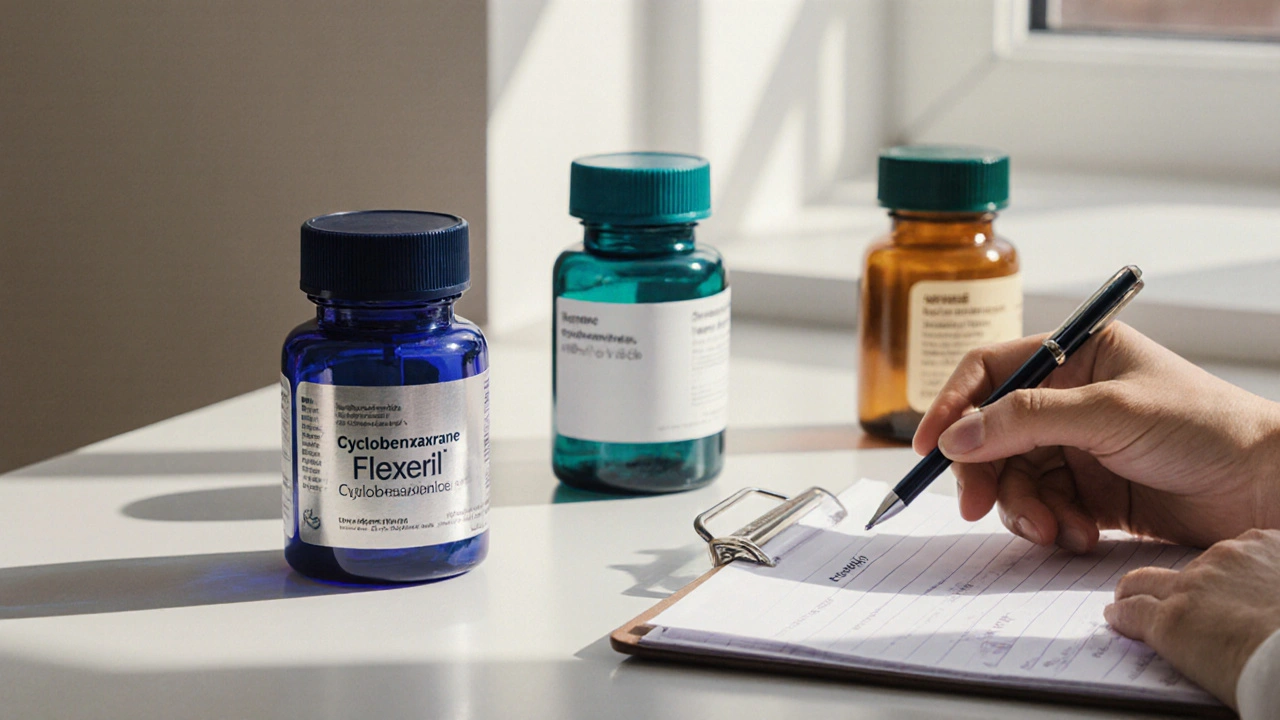Compare Flexeril: Alternatives, Dosage, and Side Effects
When working with Flexeril, a prescription muscle relaxant used for short‑term musculoskeletal pain. Also known as cyclobenzaprine, it blocks nerve signals that cause muscle stiffness. compare Flexeril with other options helps you avoid surprise side effects and pick the right dose for your situation. Flexeril belongs to the broader class of muscle relaxants, drugs that reduce skeletal muscle tone by acting on the central nervous system. Understanding its place in this class lets you see why doctors often switch patients to Baclofen, a GABA‑B agonist used for spasticity and certain chronic pain states when Flexeril isn’t tolerated. The relationship can be expressed as: Flexeril encompasses muscle relaxation, Baclofen requires caution in kidney disease, and Tizanidine influences blood pressure. These connections set the stage for a practical comparison.
Key Alternatives to Flexeril
Most people start with Flexeril because it’s widely prescribed, but alternatives like Tizanidine, an alpha‑2 adrenergic agonist that reduces muscle tone with a shorter half‑life and Carisoprodol, a centrally acting relaxant that can cause dependence if used long term provide different benefit‑risk profiles. Tizanidine often appeals to patients who need quick relief without the drowsiness Flexeril can cause, yet it can drop blood pressure, so monitoring is essential. Baclofen, on the other hand, is useful for spinal cord injury‑related spasticity but may cause weakness if dosed too high. When you compare these drugs, look at three core attributes: mechanism of action, typical dosing range, and common side effects. Flexeril’s usual dose is 5 mg three times daily, capped at 30 mg per day; Tizanidine starts at 2 mg at bedtime and can be titrated up to 8 mg three times daily; Baclofen often begins at 5 mg three times a day, with a maximum of 80 mg per day. Side‑effect patterns differ: Flexeril leans toward sedation and dry mouth, Tizanidine adds dizziness and hypotension, while Baclofen may cause constipation and fatigue. By mapping these attributes, you can match a drug’s profile to your personal health goals and any co‑existing conditions.
Beyond the core trio, other agents like methocarbamol and chlorzoxazone sit on the periphery of the muscle‑relaxant market. They share the class label but vary in potency and drug interaction potential. For example, methocarbamol rarely triggers drowsiness but may interact with anticoagulants, while chlorzoxazone can raise liver enzymes in sensitive patients. When you compare Flexeril to these options, consider the patient’s age, liver and kidney function, and any concurrent medications. Real‑world practice shows that clinicians often start with the lowest effective dose of Flexeril, monitor for sedation, and switch to Tizanidine if daytime alertness is a priority. If chronic spasticity is the main issue, Baclofen might become the drug of choice despite its muscle‑weakening side effect. Knowing the dosage limits, side‑effect spectrums, and contraindications helps you make an informed decision without trial‑and‑error. Below you’ll find a curated collection of articles that dive deeper into each comparison, dosage guidelines, safety tips, and patient stories—so you can pick the right muscle relaxant for your needs.
Flexeril vs. Other Muscle Relaxants: Full Comparison
A detailed comparison of Flexeril (Cyclobenzaprine) with top muscle‑relaxant alternatives, covering effectiveness, side effects, costs, and best‑use scenarios.
Read more
